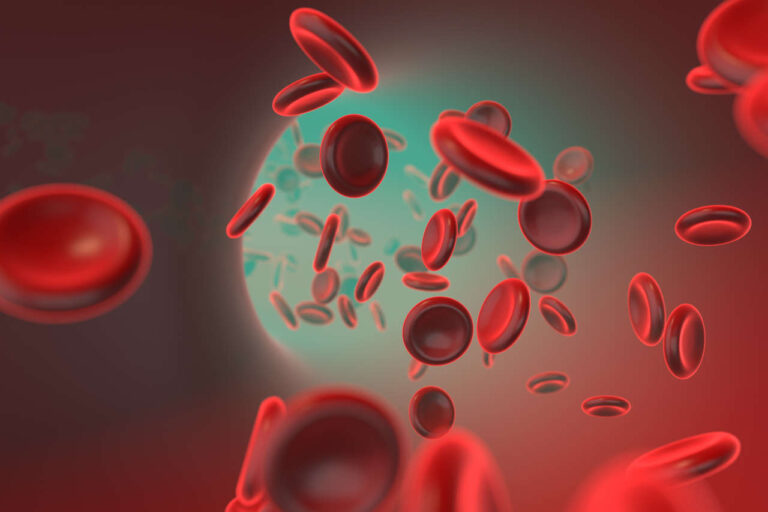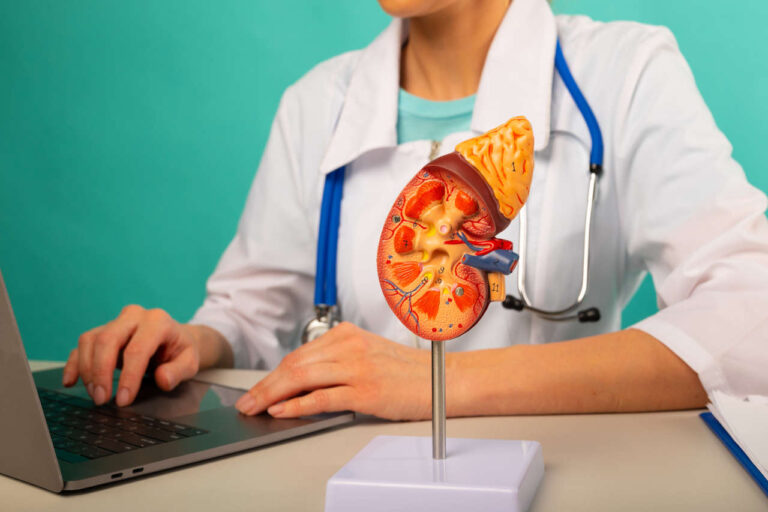
Toxic epidermal necrolysis (TEN) is a rare but serious skin condition that can be life-threatening. In the United States, it affects about 1.9 adults per million people each year. This condition typically develops as a severe allergic reaction to certain medications, causing your skin to develop rashes, sores, and blisters, then peel, similar to what happens with severe burns.
Can IVIG help?
Free IVIG Treatment InfoIntravenous immunoglobulin (IVIG) is considered a potential treatment for toxic epidermal necrolysis because of its ability to suppress type IV hypersensitivity reactions and inhibit cell death. In fact, a recent case report demonstrated that IVIG therapy combined with high-dose steroid therapy led to the complete resolution of pembrolizumab-induced TEN in a patient.
In this article, we will explain what TEN is, how IVIG works, and how it helps patients recover from this potentially fatal skin condition.
Toxic Epidermal Necrolysis (TEN): Overview
Toxic epidermal necrolysis, also known as Lyell’s syndrome, is a rare and most severe form of Stevens-Johnson Syndrome (SJS). In people with SJS, TEN is diagnosed when more than 30% of the skin surface is affected and there is extensive damage to the body’s moist linings, called mucous membranes.
Just like SJS, the condition typically starts with flu-like symptoms that appear 1 to 3 weeks after the start of a medication. Then, it is followed by a painful red or purplish rash on the skin that quickly spreads to the face, neck, trunk, and the rest of the body in an irregular pattern. Blisters form, and large portions of skin may detach, exposing raw areas underneath called erosions, similar to a severe hot-water burn.
Widespread damage to the skin and mucous membranes, such as the mouth, nose, throat, and genitals, can cause severe fluid loss and infection. In the most severe cases, patients can experience shock, sepsis, multiple organ failure, and death.
What Causes Toxic Epidermal Necrolysis (TEN)?
TEN is triggered by a particular medication (e.g., antibiotics, anti-seizure medications, anti-gout medications, NSAIDs). When your body’s immune system overreacts to certain medications, it mistakenly starts attacking the skin and mucous membranes. This reaction is a delayed type of allergy (type IV hypersensitivity reaction) involving special immune cells called cytotoxic T cells and natural killer (NK) cells.
When these cells are activated, they release substances (granulysin, perforin, and granzyme) that damage the skin’s outer layer (epidermis), causing the skin to die and peel off. One crucial part of this damage comes from a signal called Fas ligand, which tells skin cells (keratinocytes) to self-destruct.
Efficacy of IVIG Therapy in Toxic Epidermal Necrolysis: Clinical Evidence
Studies on the effectiveness of IVIG in TEN are limited due to the rarity of the disease. However, multiple case reports; open-label, prospective studies; and retrospective case series have demonstrated positive outcomes of IVIG therapy in TEN patients if initiated early.
For instance, a case report of a 5-year-old with lamotrigine-induced TEN when treated with IVIG along with pediatric burn unit care resulted in excellent outcomes, with faster healing and lower risk of mortality than either treatment alone.
Similarly, another case report of an 83-year-old man with TEN who received IVIG (400 mg/kg/day for 5 days) following inadequate response to high-dose steroids showed improved skin symptoms. The patient did, however, develop thrombocytopenia (low platelet count), which resolved after the IVIG treatment.
While IVIG shows promising results, it requires careful monitoring for potential adverse effects.
Consult an IVIG Specialist
How IVIG Works in Toxic Epidermal Necrolysis

The mechanism of action of IVIG is complex and not completely understood. However, research has found that IVIG modulates the immune response by inhibiting or blocking specific immune-mediated pathways.
1. Blocking Fas-FasL Mediated Apoptosis
In patients with TEN, the Fas-Fas Ligand (FasL) pathway is a central mechanism that causes massive skin detachment and blistering. Keratinocytes (skin cells) have Fas receptors on their surface, which can bind to Fas ligands (FasL) released by immune cells. The Fas-FasL binding triggers apoptosis (programmed cell death) of skin cells.
The anti-Fas immunoglobulin present in IVIG blocks the Fas receptor by binding to it, thereby preventing FasL from attaching to its receptors on skin cells. This interruption in the Fas-FasL interaction halts apoptosis, slowing or stopping further skin cell death.
2. Reducing Cytotoxic T Cell and NK Cell Activity
IVIG modulates the immune response by downregulating the function of overactive cytotoxic T cells and NK cells. This reduces the release of other harmful molecules (like granulysin and granzyme B) that contribute to tissue damage.
3. Anti-Inflammatory Effects
IVIG produces anti-inflammatory effects that help to neutralize the effects of pro-inflammatory cytokines such as TNF-α, IL-2, and IFN-γ, which are elevated in TEN and contribute to inflammation and tissue injury.
4. Modulation of Fc Receptors
The Fc receptor plays a role in immune activation. IVIG antibodies bind to Fc receptors present on immune-activating cells, such as macrophages and dendritic cells, thereby interfering with cell activation and antigen presentation. This prevents further immune activation and recruitment of additional immune cells to the skin.
5. It Provides Passive Immunity
Although not its primary purpose in TEN, IVIG also boosts the patient’s overall antibody levels and offers protection against secondary infections in TEN due to skin loss.
When and How Long Is IVIG Therapy Given to TEN Patients?
IVIG is initiated as early as possible, preferably within 24 hours of diagnosis. The duration of IVIG therapy in patients may vary, depending on the severity of the disease. Typically, in toxic epidermal necrolysis cases, patients receive IVIG infusions daily for 3 to 5 days.
You may receive an initial dose of IVIG, up to 3g/kg, divided over 3 days (1g/kg/day) or up to 2g/kg delivered as a single dose.
Are There Any Side Effects of IVIG?
A patient with toxic epidermal necrolysis may experience some side effects like nausea, headache, chills, or fever while receiving the infusion. In rare cases, thrombocytopenia (a low platelet count) or aseptic meningitis may develop, requiring careful monitoring.
Get IVIG Prior Authorization
How Does Toxic Epidermal Necrolysis Differ From SJS?
Although both SJS and TEN involve skin peeling and mucous membrane damage, they differ in the extent of body involvement.
If less than 10% of the body surface is involved, it’s diagnosed as SJS. If more than 30% is involved, it’s diagnosed as TEN. Cases involving 10 – 30% of the body fall into the overlap category (SJS/TEN).
REFERENCES:
- Yang, L., Shou, Y., Li, F., Zhu, X., Yang, Y., & Xu, J. (2022). Intravenous Immunoglobulin Combined With Corticosteroids for the Treatment of Stevens–Johnson Syndrome/Toxic Epidermal Necrolysis: A Propensity-Matched Retrospective Study in China. Frontiers in Pharmacology, 12, 750173. https://doi.org/10.3389/fphar.2021.750173
- Kian, W., Zemel, M., Elobra, F., Sharb, A. A., Levitas, D., Assabag, Y., Alguayn, F., Yakobson, A., Rouvinov, K., & Fuchs, L. (2021). Intravenous immunoglobulin efficacy on pembrolizumab induced severe toxic epidermal necrolysis. Anti-Cancer Drugs, 33(1), e738–e740. https://doi.org/10.1097/cad.0000000000001162
- Zhang, C. (2016). The Effect of Intravenous Immunoglobulin Combined with Corticosteroid on the Progression of Stevens-Johnson Syndrome and Toxic Epidermal Necrolysis: A Meta-Analysis. PLoS ONE, 11(11), e0167120. https://doi.org/10.1371/journal.pone.0167120
- Momin, S. B. (2009). Review of Intravenous Immunoglobulin in the Treatment of Stevens-Johnson Syndrome and Toxic Epidermal Necrolysis. The Journal of Clinical and Aesthetic Dermatology, 2(2), 51. https://pmc.ncbi.nlm.nih.gov/articles/PMC2958184/
- Labib, A., & Milroy, C. (2023). Toxic epidermal necrolysis. StatPearls – NCBI Bookshelf. https://www.ncbi.nlm.nih.gov/books/NBK574530/
- Prins, C., Kerdel, F. A., Padilla, R. S., Hunziker, T., Chimenti, S., Viard, I., Mauri, D. N., Flynn, K., Trent, J., Margolis, D. J., Saurat, J., & French, L. E. (2003). Treatment of toxic epidermal necrolysis with High-Dose intravenous immunoglobulins. Archives of Dermatology, 139(1), 26. https://doi.org/10.1001/archderm.139.1.26
- Alzughayyar, T. Z., Ibrahim Hamad, W. N., S. Abuqweider, E. A., Mohammad Alqam, B. N., Abukhalaf, S. A., Misk, R. A., Abunejma, F. M., Zalloum, J. S., Saleh, M., Abumunshar, A. A., & M. Zatari, Y. I. (2019). IVIG and under Burn Unit Care Yield Favorable Outcomes in Pediatric Patients with Toxic Epidermal Necrolysis: A Case Report and Literature Review. Case Reports in Dermatological Medicine, 2020(1), 6274053. https://doi.org/10.1155/2020/6274053
- Hsieh, M., Watanabe, T., & Aihara, M. (2021). Recent dermatological treatments for Stevens-Johnson syndrome and toxic epidermal necrolysis in Japan. Frontiers in Medicine, 8. https://doi.org/10.3389/fmed.2021.636924
- Estrella-Alonso, A., Aramburu, J. A., González-Ruiz, M. Y., Cachafeiro, L., Sánchez, M. S., & Lorente, J. A. (2017). Toxic epidermal necrolysis: A paradigm of critical illness. Revista Brasileira de Terapia Intensiva, 29(4), 499. https://doi.org/10.5935/0103-507X.20170075
- Nishita, Y., Taga, M., Arakawa, N., Ishida, T., Ochiai, S., Ono, H., Taga, F., & Masauji, T. (2025). Toxic epidermal necrolysis with thrombocytopenia induced by intravenous immunoglobulin: a case report and mini review. Journal of Pharmaceutical Health Care and Sciences, 11(1). https://doi.org/10.1186/s40780-024-00405-2












